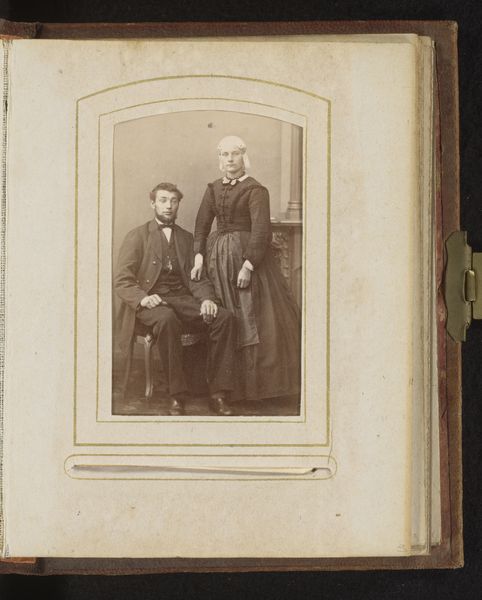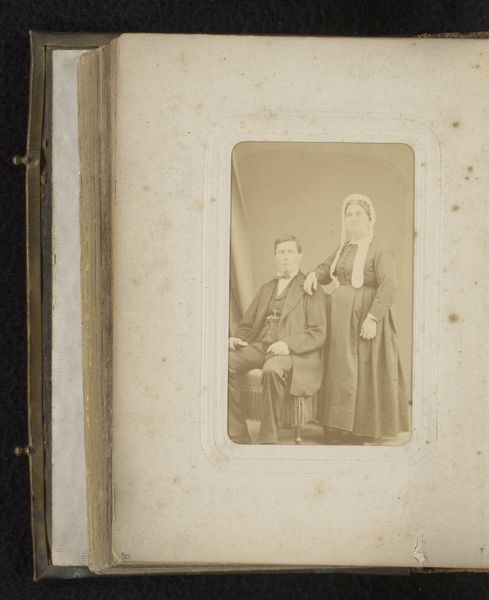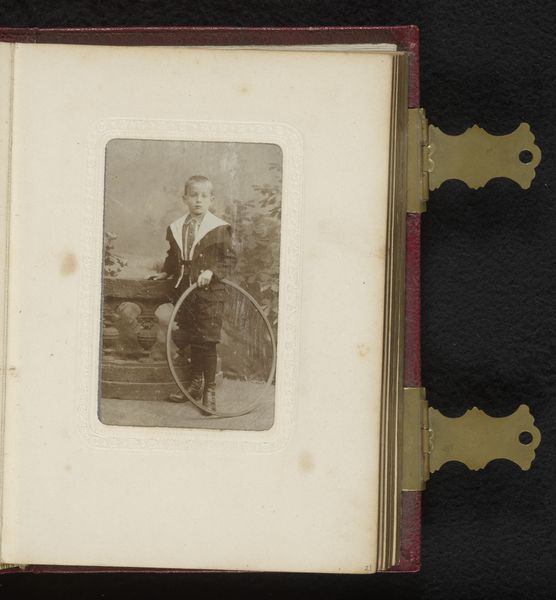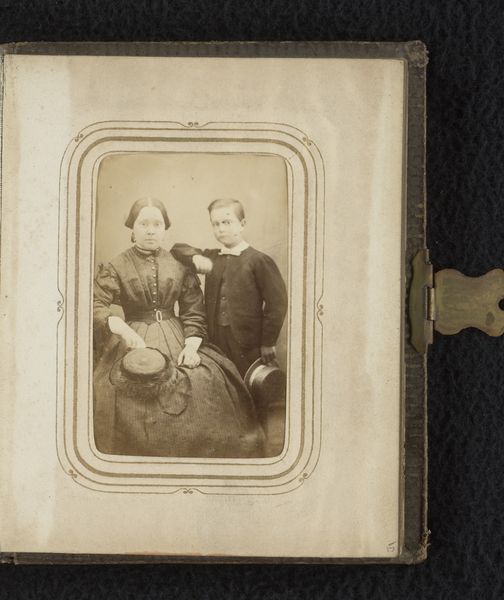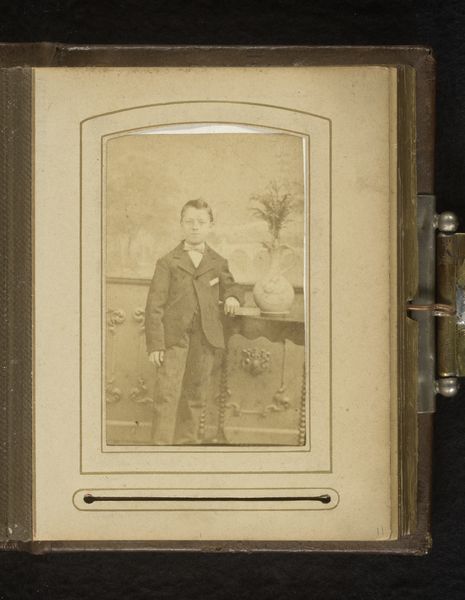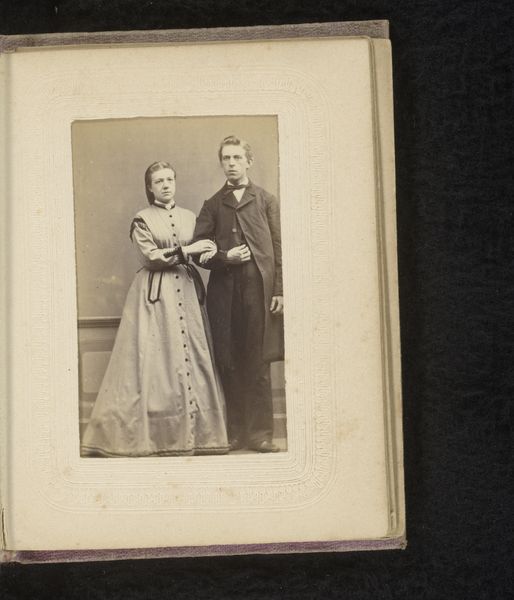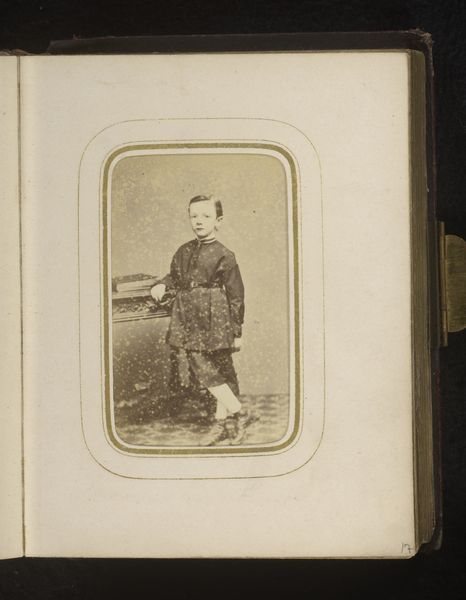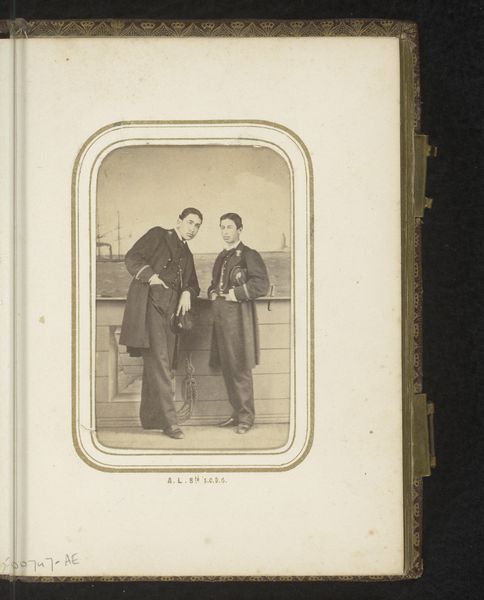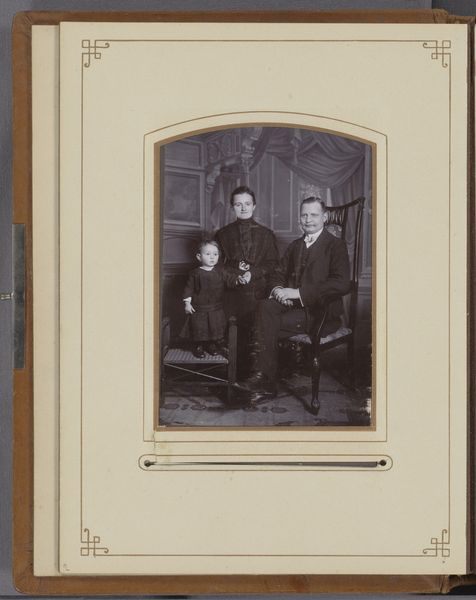
Portret van een staande vrouw en een zittende man, aangeduid als zendeling Van Dalen en zijn vrouw 1873 - 1900
0:00
0:00
carlwilhelmbauer
Rijksmuseum
photography
#
portrait
#
photography
#
19th century
Dimensions: height 82 mm, width 50 mm
Copyright: Rijks Museum: Open Domain
Curator: This is a photographic portrait from the late 19th century, titled "Portret van een staande vrouw en een zittende man, aangeduid als zendeling Van Dalen en zijn vrouw"—that is, "Portrait of a standing woman and a seated man, identified as the missionary Van Dalen and his wife." It's held here at the Rijksmuseum and was created sometime between 1873 and 1900 by Carl Wilhelm Bauer. Editor: Oh, what a stoic pair. I find their postures incredibly revealing. She's standing, yet she’s got her hand possessively on his shoulder as he sits. He seems rather…weighted down. It's a study in contrasts and perhaps the burdens of their vocation? Curator: Precisely. Note how the composition directs our gaze. The woman's height, combined with the visual weight of her ornate dress, creates a vertical emphasis, a kind of assertiveness. And then, look at the man; he is seated, his darker suit absorbing light. It yields to a horizontal, stable form, indicative, perhaps, of his role as a solid foundation. Editor: I see that, but I also sense something else. Their stillness. These old photographs often capture a solemnity that feels… theatrical? It's as if they're acting a part. Is this what they showed the world, or a carefully crafted image? Curator: The very act of posing would suggest that it’s a performance of sorts, wouldn’t you say? Though such performances communicate and cement power structures within families and society. There’s certainly an interesting dichotomy in the plainness of the background and their elaborate dress. A calculated control that tells its own story about privilege. Editor: I suppose. I also wonder about Van Dalen’s mission. What was he trying to accomplish? How complicit were they in any potential…misguided attempts to civilize? The picture, its sepia tones almost like faded memories, make you confront questions of responsibility and the impact of the past. Curator: A penetrating assessment. It reminds us that formal elements like line and light cannot be isolated from historical narratives of colonialism, power, and representation. By deconstructing the visual elements, we open the door to further interpretive possibilities that help bridge medium, image, and complex sociohistorical phenomena. Editor: It’s funny how a simple image of a serious couple can bring all that bubbling to the surface, isn't it? Gives you the chills.
Comments
No comments
Be the first to comment and join the conversation on the ultimate creative platform.

